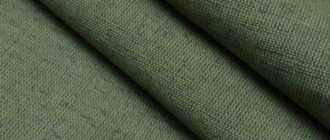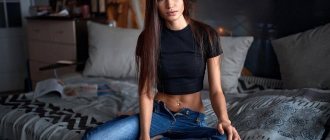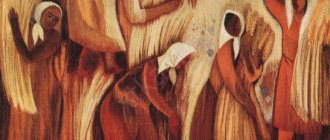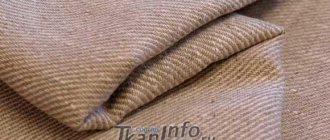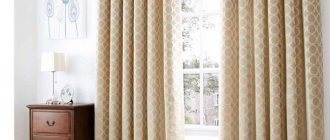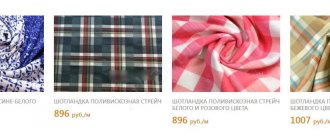The fashion for everything natural and natural is developing rapidly throughout the world. Now the attention of Russian buyers is focused exclusively on matting - an environmentally friendly, practical and versatile fabric.
In ancient times, matting meant a rough, unsmooth fabric from which bags were made. Initially, the fabric was made from the cattail plant, from which the name of the canvas came. But times passed, and matting, once an unnecessary household fabric, improved.
Nowadays, on the modern market you can find an abundance of curtains, bedspreads, and bags made from matting. And I must say, they look quite impressive. Smart and resourceful designers have even managed to use matting in furniture upholstery.
Would you like to know more about matting? What is matting, what are its main properties, features and how people respond to it - we will tell you about all this in our article. But what fabric to sew a bedspread on the sofa from and how it will look is indicated in this article.
What is Gozhka fabric, its types
Matting is a kind of chenille, a light-colored fabric made of cotton or linen. Due to the special interweaving of threads, a unique pattern is obtained that can really be seen. Many naively believe that weaving such a fabric is a piece of cake! But don't promise!
Texture
In fact, when creating such fabric, craftsmen invest not only a piece of their soul, but also enormous effort. Just imagine: the matting is created using the method of double or even triple paired weaving of threads! And only after this does the master see a drawing similar to a chessboard. But what kind of double-thread fabric is and where such fabric is used is indicated here.
In the photo - matting fabric:
Where can it be used
Matting can be called a universal, multifunctional material, which has received praise from buyers due to the fact that it can be actively used for sewing stylish clothes and upholstering furniture.
For furniture upholstery
If you upholster upholstered furniture with high-quality matting, the filling will not wrinkle or sag. In any case, upholstery fabric should be practical and wear-resistant.
But this information will help you understand what calico bed linen looks like and what their cost is.
The matting can boast that it is good in many ways. Which ones? Read on.
Weaving matting fabric
When purchasing furniture, most buyers place their hopes on the strength characteristics of the upholstery fabric - matting. But be careful: pets love to sharpen their claws on this furniture fabric. Otherwise, the matting will exceed all your expectations; it looks especially worthy in an interior style such as country or Provence.
People who are not very intelligent may say: “Ah—a matting! Are you talking about the matting? Yes, this is the last century! Country style!". However, this is by no means the case. We will break all stereotypes and prove you wrong.
"Luxury and grace!" - the same person will exclaim when he sees matting on upholstered furniture in a Scandinavian-style living room. This is how, in a matter of hours, the idea of this upholstery material can change.
The upholstery fabric in creamy, creamy, beige shades is simply incomparable. Matting in coffee, sand, and gray shades would be appropriate to use in a traditional English, Russian or French interior. And the contemporary style approves of the use of noble, fleecy fabric. Well, are you convinced that matting is by no means a useless material? I think yes.
But what the characteristics of Cordura fabric may be and where such fabric is used will help you understand this information.
Production Features
The structure of the matting can be either smooth or fleecy. As a rule, natural raw materials (linen, cotton, wool, silk) and artificial (polyester, acrylic) are used. Sometimes, to give the fabric strength, elasticity and practicality, artificial threads are mixed with natural ones. Based on the fact that this fabric is quite environmentally friendly, many people think of it as a tough, prickly and hard fabric, but this is not at all the case. Thanks to the addition of polyester and acrylic, the fabric becomes smooth and pleasant to the body. Therefore, you don’t have to worry about skin damage or irritation.
Structure
The use of modern technologies makes it possible to obtain a unique design through a special method of weaving linen, hemp, wool, cotton and other threads. Thanks to this, products made from matting have a very impressive appearance.
You might be interested in what is remarkable about the curtain material Canvas: a description of the properties of the fabric
Composition, characteristics
You will be pleasantly surprised by the variety of breathable materials from which the matting can be made. So, silk, linen, cotton or wool are actively used for its production. To achieve maximum strength of the material, its composition is supplemented with acrylic and polyester.
The percentage of natural raw materials: cotton or linen determines the weight, shine, and thickness of the matting. It is thanks to cotton or linen that the impeccable, silky smoothness of the fleecy material is achieved.
But what is the composition of polyviscose fabric and where such a product is used most often is indicated in this article.
If you want every touch of your favorite fabric to give you pleasure, choose the matting with the highest percentage of linen, cotton or silk.
The fabric is also successfully used for sewing curtains. It looks very original and textured in this design. A room where magic matting curtains hang will delight the surrounding decoration. You can show originality by upholstering decorative pillows with matting.
The matting is distinguished by the following characteristics:
- For its production, 100% fibers of wool, silk, etc. are used. In order to increase wear resistance and reliability, acrylic or polyester is added to the composition of the matting;
- It has a dense and rough texture, similar to burlap;
- It doesn't wrinkle;
- Possibility of operation for a long period of time.
On the video there is matting fabric:
Origin and appearance
Many centuries ago, strong, coarse matting was woven from a tall marsh plant, the angustifolia cattail, which looks like a reed. Cattail was used in the manufacture of furniture, rugs, rugs, and baskets. Dry stems were used for heating, and the fluff was used for stuffing mattresses and pillows. The fibers were used to weave burlap for sewing knapsacks and peasant clothes. The material had a strong, dense structure and a 2 or 3 thread weave.
Later, linden bast became the raw material for it. It was processed into ropes, which were soaked and used for weaving, first by hand, then on looms.
Baggy matting gained worldwide fame after the release of Coco Chanel's collection based on it. From a material for the poor, it suddenly turned into a fabric that brings people closer to nature. Models made from matting held their shape well, were similar to products made from linen, but were much cheaper. Today, famous couturiers continue to make clothes from matting. Along with this, the material is used for sewing napkins, tablecloths and other home textiles.
Application of material
Matting has gained such wild popularity due to the fact that with the development of technology, this fabric began to be produced more delicately. To create curtain fabrics, cotton, wool or linen threads are used. Curtains made of matting fill the interior of the room with unusual simplicity and create the effect of deliberate roughness. In addition, the interior of the room is illuminated by some kind of natural light, and notes of naturalness can be seen in the surrounding decoration. But how tencel fabric is used and how good such material looks is indicated here.
Fabric matting for furniture
In the case of a more delicate design on the curtain fabric, the matting will best fit into an eco-style bedroom, as well as into the interior of a strict men's office.
Many people fell in love with matting due to the abundance of colors and textures, which made it incredibly popular in the upholstery of poufs, armchairs, and chairs. The canvas can organically fit into any interior; you just need to show your imagination and don’t skimp on ideas. The matting harmonizes the surrounding space and creates an atmosphere of comfort and warmth in the home. What else is needed for complete happiness? It will also be useful for you to learn how to distinguish natural suede from artificial one.
Matting fabric for chairs
Due to the fact that matting has such a quality as resistance to abrasion and damage, they have learned to use it in the upholstery of office furniture and furniture located in public places.
Matting is successfully used as a separate material, as well as in conjunction with companion fabric. Such fabric can be cotton, flock or leather.
These days, designers are looking for more and more new ways to use matting. A matting for sewing curtains is another option for successfully using this material.
You will also be interested to know what faux suede upholstery fabric looks like.
Curtains and tablecloths made from this material are famous for their brilliant appearance, practicality, and luxury. In addition, compared to curtains made from other materials, curtains made from matting do not wrinkle.
You will also be interested in learning more about what anti-vandal fabric for a sofa looks like.
Advantages and disadvantages
Pros:
- Pleasant to the touch.
- Keeps its shape well.
- Durable.
- Doesn't wrinkle.
- Very easy to care for.
- Universal in use and goes well with other materials.
- Wide choice of colors.
- Good breathability.
- Retains its color after many washes and does not fade in the sun.
- Low cost of material.
- High density, which starts from 200 g/m2.
A few disadvantages:
- When cutting and sewing, the material requires a certain skill of the craftsman, since the edges fray greatly,
- Owners of pets who are not accustomed to scratching posts should not choose this type of furniture upholstery. Thanks to its distinctive texture, cats and dogs will certainly like the matting for sharpening their claws.
- Thin fabric easily leaves snags.
- If washed incorrectly, the natural material may shrink significantly.
What you shouldn’t make from matting
Yes, this material is very practical, but it is not suitable for all products. For example, you should not sew sheets and pillowcases from this material, as the roughness of the fabric will create discomfort for the body. Also, it is worth thinking about clothes made from matting, since not all wardrobe items made from such material will be pleasant to the body.
You might be interested in Using a header for bed linen and dresses
Additional Information! For needlewomen, this material is very popular in creativity; it is suitable as a canvas for cross stitch, you can use it to sew souvenir toys from matting - dolls, amulets, amulets and the like, you can make decorative flowers. All this will not only be an excellent home decor option, but also a wonderful gift.
Decorative use
Characteristics
The matting has received recognition from customers due to its good technical characteristics. Among them:
- Density. Upholstery varieties are characterized by an indicator of 190 g/sq.m. meter. Among clothing fabrics there are options with a lower density - 170 g/m2. meter.
- Thickness. Varies from 0.4 to 1.6 mm.
- Abrasion resistance is very high. The material can withstand many washing cycles.
- Anti-pilling. The formation of pellets is prevented by treatment with special means.
- Resistance to deformation. The material holds its shape well, does not stretch, and is difficult to tear.
Such performance indicators make textiles durable and practical to use.
